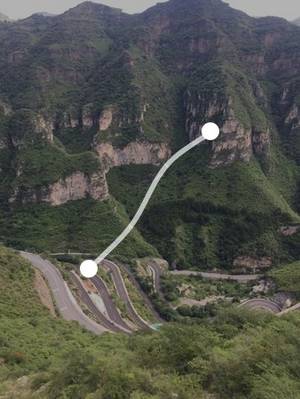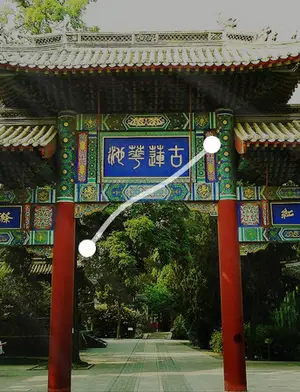Zen gourmet journey along the North Jinbei Loop
3 cities |
19 attraction(s) |
total distance 266
km
 TIPS
TIPS
Day1
Day2
Day3
Day4
Day1: Datong
5 attraction(s) ·
28 km
1
The Northern Wei royal family, which ruled over northern China at that time, concentrated the national skills, manpower, and resources to carve it out. It is one of the four major grottoes in our country.
18
km
2
Chain store with multiple branches in the city area. Specializes in Shanxi knife-cut noodles, which are wide and thin, extremely chewy, with a delicious and rich soup base. Braised meatballs are among the must-try side dishes, with moderate size and fat-to-lean ratio. The decoration is similar to McDonald's or KFC, and the speed of serving is fast.
4
km
4
Fenglinge Restaurant, established during the Ming Dynasty in the Zhengde period, is famous for the story of "Drunk Dragon and Playing Phoenix" in 1518 and the delicious "Baihua Shaomai" in the Qing Dynasty. It is a gathering place for celebrities and gourmets throughout the ages. With its long history, profound cultural heritage, and legendary stories, Fenglinge has become one of the cultural brands of Datong, a city with a splendid culture.
6
km
5
Day2: Datong > Shuozhou > Datong
6 attraction(s) ·
182 km
1
Huayuan Temple was built in the seventh year of Liangzhongxi in the Liao Dynasty. It is divided into Upper Huayuan and Lower Huayuan, both located in the same temple with a connecting Moon Gate.
33
km
2
Datong Tulou Forest, known as "Shiban Gou" by the locals, is a natural scenic area located in Dazhuang Village, Datong County, Datong City, Shanxi Province. It is also known as "Fox Fairy Temple" by the locals and is the only known tufa landscape in northern China. The tufa landform covers an area of about one kilometer east-west and about three kilometers north-south, with various natural formations of tufa columns and walls, resembling sculptures and fascinating viewers.
89
km
3
There are many local restaurants near the scenic area, highly recommend "liangfen"! It combines sour and spicy flavors, refreshing and tasty. Different from the spiciness in Sichuan and Guizhou, it has a unique and delicious taste! You can choose any restaurant, hahaha. I remember "youmian kao lao lao" made by grandma is also very good.
2
km
4
As the tallest and oldest wooden pagoda in the world, this pagoda was built in the second year of the Qingning period of the Liao Dynasty (1056 AD). It has stood for more than 940 years, despite enduring strong winds, storms, powerful earthquakes, and artillery bombardment (with numerous bullet marks on the tower, including embedded bullets). It is constructed entirely by interlocking brackets and pillars without the use of nails or rivets, using over 50 different types of brackets. The lower eaves of the tower's corridor are supported by 24 wooden columns, each bearing a load of 120 tons when the tower is at rest, yet there are no mortises in the stone foundation below the columns. It is said that an inquisitive person once used a rope to pass it horizontally between the stone foundation and the wooden columns with both hands. Therefore, there is a folk legend of the 24 wooden columns taking turns intermittently. The entire pagoda is equipped with wooden stairs, allowing visitors to climb to different levels where they can enjoy different views. What is most special is the large Buddhist statue enshrined inside the tower, which is crafted with exquisite skill. The statue of Shakyamuni Buddha on the first level is 11 meters high, and when gazing up at it from within the tower, it appears even more majestic. Surrounding it are murals of Vajras, heavenly kings, disciples, and benefactors, all painted in a delicate and vivid style unique to the Liao Dynasty. On the second level, with light coming from all directions, it suddenly opens up and features a main Buddha, two bodhisattvas, and two attendants arranged in lively poses. The third, fourth, and fifth levels also have statues of bodhisattvas alongside the Buddha, each level with different sculptures and unique architectural structures.
57
km
5
The northern part of Shanxi is famous for its coarse grains. Here, you can taste Yomian Wowa and Oil Cake, accompanied by local lamb offal and fried meat, while enjoying the beautiful scenery and experiencing the local culinary specialties.
3
km
6
At the foot of Mount Heng, very close to Hanging Monastery. Parking is available at the entrance, rooms are relatively clean, with internet TV, overall high cost performance.
Day3: Datong
6 attraction(s) ·
37 km
1
In the northern region, besides noodles, drinking porridge for breakfast and having meat pancakes is also a good choice to warm the stomach and boost energy. After eating breakfast, it's better to buy some dry food because climbing Mount Heng may take a while, and it's preferable to bring your own lunch.
7
km
2
The original name of the Hanging Temple was "Xuan Kong Ge", but it was later renamed "Hanging Temple" because the entire temple hangs on the edge of a cliff.
6
km
3
When coming down the mountain, try the Hunyuan cold noodles in town. Hunyuan cold noodles are the most famous cold noodles in the northern part of Shanxi province, second only to Yingxian cold noodles. Compared to Yingxian cold noodles, Hunyuan cold noodles have a smoother texture and are best enjoyed by drinking the broth. Pair it with local sugar biscuits for an authentic local experience.
12
km
4
Hengshan is the northern mountain among the "Five Great Mountains" and also a sacred site of Taoism. It is said that Zhang Guolao, one of the Eight Immortals, attained enlightenment through cultivation on Hengshan.
12
km
5
Due to religious factors, there are no meat dishes available. However, this restaurant tries its best to make vegetarian dishes taste like meat dishes, and the texture is also very good! When you come to Shanxi, noodles are a must-have specialty. Knife-cut noodles and buckwheat noodles are especially well-known classics and worth a try.
3
km
6
The restaurant is close by and parking is convenient. The hotel is very clean and sanitary.
Day4: Baoding
2 attraction(s) ·
20 km
1
Baishi Mountain Geological Park is a natural scenic area dominated by spectacular peak forests and one of the most famous attractions in Baoding City.
20
km
2
A local restaurant that serves a variety of wild vegetables from Baishishan and traditional noodles from Shanxi. The owner is witty and enthusiastic, providing excellent service. The stewed chicken soup with Taiwan mushrooms is a delicious signature dish, although it is not cheap.





































